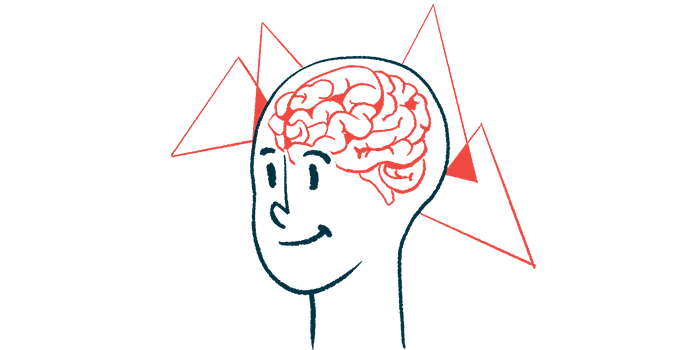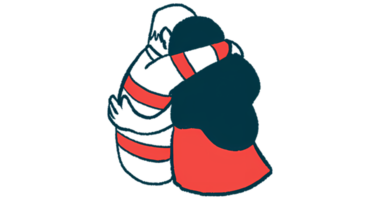MS trial to test magnetic brain stimulation for overactive bladder
Texas site now enrolling 29 women with MS and urinary tract problems

A small clinical trial in Texas is testing whether a noninvasive magnetic brain stimulation procedure can ease the symptoms of overactive bladder in adults with multiple sclerosis (MS).
The randomized Phase 2 study (NCT06072703) is ongoing at Houston Methodist Hospital, and is recruiting about 29 women with stable MS and symptoms of lower urinary tract dysfunction to test the effects of repetitive Transcranial Magnetic Stimulation, known as rTMS.
“We are confident that we will accomplish our goal of increasing the quality of life for those burdened with MS and [lower urinary tract dysfunction],” the researchers wrote.
While MS affects more women than men, bladder problems are common among all patients regardless of sex. Indeed, at least 4 of every 5 MS patients experience some form of bladder dysfunction. For this study, the team of scientists sought to build on their previous research involving lower urinary tract function in women.
The trial’s protocol was detailed in “Evaluating noninvasive brain stimulation to treat overactive bladder in individuals with multiple sclerosis: a randomized controlled trial protocol,” an article published in the journal BMC Urology.
Trial builds on earlier study of women with bladder problems
Nearly all people with MS experience neurogenic overactive bladder, or NOAB, a neurological condition marked by frequent urination, or an urgent desire to urinate, with or without a loss of bladder control, known as incontinence.
Typically, first-line treatments for overactive bladder involve bladder training, pelvic floor muscle training, and adjustments to fluid intake. Medications also can be used, but these carry the risks of side effects and have only moderate effectiveness for most patients.
An alternative approach is noninvasive repetitive Transcranial Magnetic Stimulation, which takes advantage of the brain’s regulatory role in bladder function. rTMS involves placing an electrical coil near the scalp to deliver magnetic pulses to specific brain regions, with the aim of modulating nerve cell activity.
A few years ago, a Methodist Hospital Research Institute team conducted a pilot study (NCT03574610) that tested rTMS in 10 women with MS who had difficulty emptying their bladder, leading to urinary retention.
Data from the trial, which was completed in 2022, showed that rTMS increased activation in the brain regions involved the start of urination. Urine retention in the bladder was significantly reduced among participants. Moreover, these treated patients reported significant improvement in bladder emptying symptoms.
Now, the team designed a controlled clinical trial, funded by a National Institutes of Health grant, to evaluate the impact of rTMS in women with MS and overactive bladder. The trial’s primary goal is to assess whether such magnetic brain stimulation can restore brain function and reduce signs of urinary frequency, urgency, and incontinence.
Eligible participants are women with clinically stable MS, defined as the absence of worsening disability for at least six months before study entry, and symptoms of neurogenic lower urinary tract dysfunction for at least three months.
As many as 29 patients will be enrolled. Among them, 19 will be randomly assigned to rTMS and 10 to a sham treatment, with those patients serving as the control group. The study will be blinded, meaning neither patients nor researchers will not know the assigned treatments.
“The sham rTMS treatment is indistinguishable in appearance and sound from the active treatment sessions,” the researchers noted.
Patients will be given magnetic brain stimulation or sham treatment
To help locate specific targets in each participant’s brain, the team will apply functional MRI (fMRI) before and after urination to identify which brain areas are involved in bladder control. Each individual will undergo at least 10 rTMS treatment/sham sessions, with the option to receive further rTMS in an optional open-label extension (OLE) study.
Patients will complete questionnaires before and after the stimulation to monitor for potential complications and provide feedback on their perception of the type of treatment received.
Within a week after the final session, participants will return to the clinic for various assessments, including urination measurements, validated questionnaires, and bladder diary entries. Participants also will undergo a repeat fMRI to identify any changes in brain activation patterns.
The primary strength of this study is that it explores a novel therapeutic option for MS with [overactive bladder] and provides insights into brain mechanisms during ‘strong urgency, a urological process that has barely been studied.
About three months after completing the tTMS or sham treatments, those who choose to participate in the OLE will receive 10 active rTMS treatment sessions. In an open-label study, both participants and researchers know the treatment being given.
“The OLE phase allows for a longer-term evaluation of rTMS treatment effectiveness while gathering additional data to further elucidate the tolerability and safety profiles of this therapeutic modality,” the team wrote.
“The primary strength of this study is that it explores a novel therapeutic option for MS with NOAB and provides insights into brain mechanisms during ‘strong urgency, a urological process that has barely been studied,'” the researchers wrote.
The trial results will be shared in peer-reviewed publications, the team said. It is expected to run through 2027.







